In this page, I want to show you all information you need for steering system auto parts. We already wrote more than 60 blogs with difference information for steering system. Below is the main content and classification of our blog. I hope it will help you in searching steering system knowledge.
1. Steering Rack
1.1. What is steering rack? All you need to know
- What is Hydraulic Steering Rack? How Hydraulic Power Steering Rack Works?
- What is EPS? How To Do Electric Steering Rack Reconditioning?
- What Is The Difference Of Manual, Hydraulic, And Electric Steering Racks? Which Is Better?
- What does a steering position sensor do? What is the relationship between steering rack and steering sensor?
- What is “Nearside Play in Steering Rack Inner Joint Cost”?
- What Is A Rotary Valve Power Steering Rack?
- Design Of Car Rack And Pinion Steering Racks
- What Is The Intelligent Steering Rack Used By VW, Toyota, Honda And Renault?
- The Development Status Of Steering Rack
- Development Of Rack And Pinion Steering Rack Grease
- Do You Know About The Recirculating Ball Steering Rack Commonly Used On Trucks?
- What Is The Function Of Steering Rack?2022 Latest Explanation
- Power Steering Rack: 2022 Everything You Need To Know
- Rack And Pinion System Vs Power Steering System: What Are The Differences?
- Different Types Of Steering Rack Structures And Characteristics
- How Does Steering And Suspension Systems Work?
- What is a Variable Pitch Rack and Pinion?
- The Steering System Components In The Car Chassis
- Selection Of Steering Gear For Formula Cars
- The Function, Principle, Composition, And Deflection Angle Relationship Of Steering System
- Exploded View Of Steering System Components
- The Car Steering System Diagram In The Car Chassis
- 2022 Fsae Cad And Cae Design For Racing Steering Systems
- Which Countries are Right Hand Drive? Can You Convert Left Hand Drive to Right? Or Right to Left?
- What Does The Chassis Of A Car Consist Of? What Is The Chassis Tuning?
1.1 Steering rack maintenance
- Power Steering Rack Use And Maintenance Cheat Sheet
- Power Steering Rack Rotary Valve Structure Analysis And Maintenance
- How To Maintain The Steering Rack? 2022 Latest Graphic Explanation
- How to Adjust Rack and Pinion Steering Gear?
- How to Adjust Rack and Pinion Steering Gear?
- How to Inspect 2 Steering System Components for Serviceability?
- How Long Do Rack and Pinion Last?
1.2 Steering rack repair
- How to Replace Steering Rack Gaiter? A Step-by-Step Guide for Repairing Your Steering Rack
- Can You Drive with A Broken Steering Rack?
- Why is my power steering fluid leaking?What color is power steering fluid when it leaks? How To Fix Power Steering Rack Leakage?
- Why Steering Rack Makes Noise When Turning?
- How To Rebuild A Steering Rack?
- What Causes Steering Rack to Go Bad?
- Automotive Chassis Steering Rack Noise Control Technology
- Hydraulic Steering Rack Limit Back To The Rudder Hydraulic Noise Analysis And Improvement
- Automotive Steering Rack Damage Analysis
- Steering Rack Eccentric Cover Parts Machining Process Optimization
- How Hard Is It To Replace A Steering Rack?(Graphic Tutorial)
- How To Do Rack And Pinion Seal Replacement?
- How Much to Replace Rack and Pinion?
- Steering Gear Use Precautions And Fault Detection Methods
- Common Faults And Troubleshooting Of Fully Hydraulic Steering Gear
- Car Steering System Noise Reduction Essentials
- Does A Turn Of Lock In Total Harm The Car’s Steering System?
- How To Replace Inner Tie Rods?
- 50 Questions! Car Repair And Maintenance Common Sense In 2022
1.21. How to Diagnose a Bad Steering Rack and When to Replace It
Your car may have a number of problems as a result of a poor steering rack, such as difficultly steering, clunking noises when turning, and a loose steering wheel. A trained mechanic should be able to diagnose a faulty steering rack quite easily.
Checking the steering system for any obvious evidence of wear or damage is the first step in detecting a damaged steering rack. This entails inspecting the steering wheel, tie rods, and the steering rack itself. Any of these parts that seem worn out or harmed need to be replaced.
The steering fluid level must be checked next. Low fluid levels could be an indication of a steering rack leak. The steering rack has to be checked for leaks if the fluid level is low.
The next stage entails inspecting the steering wheel for any looseness or play. Excessive play or looseness in the steering wheel might be a sign that the steering rack isn't working properly.
Finally, it is important to check the steering rack for any signs of wear or damage. A competent mechanic may perform this, checking the steering rack for wear or damage using a particular tool.
The steering rack should be changed right away if any of the aforementioned measures reveal a problem with it. If left unattended, a poor steering rack can result in a number of problems with your car, including the possibility of an accident. It is crucial to have a skilled mechanic examine and, if required, replace the steering rack.
1.22 What Are the Signs of a Failing Steering Rack and How to Avoid Costly Repairs
A vehicle's steering system cannot function without the steering rack. It is in charge of transforming the steering wheel's rotating motion into the steering linkage's linear motion. Numerous issues, such as difficulties steering, increased steering effort, and a clunking sound when turning, might arise when the steering rack breaks.
Fortunately, there are a number of warning indications that might point to a deteriorating steering rack, giving drivers time to respond before the issue worsens. The following are the most typical warnings of a failed steering rack:
1. Difficulty Steering: If the steering rack is deteriorating, it may become challenging to turn the wheel. When making sharp turns or parking, this is extremely obvious.
2. Enhanced Steering Effort: If the steering rack is failing, it may make it harder to spin the wheel. When making sharp turns or parking, this is extremely obvious.
3. Clunking Noise: When turning the steering wheel, a clunking noise may be made if the steering rack is deteriorating. Typically, worn or loosened steering rack components are the source of this noise.
4. Fluid Leak: A faulty steering rack may result in fluid leakage from the steering system. This is particularly obvious while the car is parked.
Knowing the symptoms of a broken steering rack and acting quickly are crucial to preventing expensive repairs. The steering system has to be checked by a skilled mechanic as soon as possible if any of the aforementioned symptoms are present. This will assist in ensuring that any essential repairs are completed prior to the issue getting worse.
1.23 How to Extend the Life of Your Steering Rack and When to Replace It
The steering rack is a crucial part of any car because it converts the driver's steering wheel movements into the movement of the wheels. As a result, it is critical to check that the steering rack is in excellent working order. Fortunately, there are a few procedures that can be performed to extend the life of the steering rack and keep it in good working order.
First and foremost, it's crucial to check the steering rack's lubrication. Regularly monitoring the fluid levels and filling them out as necessary will help with this. The seals and gaskets on the steering rack should also be examined since they might wear out over time and result in leaks. Any discovered leaks should be fixed as soon as feasible.
Second, it's crucial to prevent unnecessary stress from being placed on the steering rack. To prevent placing undue stress on the steering rack, avoid making quick bends and rapid manoeuvres. In order to lessen the strain on the steering rack, it is also crucial to make sure that the vehicle's suspension is in excellent working order.
Finally, it's crucial to have a trained mechanic frequently examine the steering rack. This can assist to extend the life of the steering rack by allowing any possible issues to be found earlier on before they become more problematic.
When it's time to repair the steering rack, it's crucial to make sure the new item is of excellent quality and works with the car. In order to guarantee that the new component is put correctly and functions effectively, it is also crucial to have it done by a competent technician.
The steering rack can live longer and remain in good condition if certain procedures are followed. However, if any issues are found, it's crucial to get them fixed right away in order to prevent future harm.
1.3 Steering Rack Purchase
- What Is the Price of Polo Steering Rack? Why Polo Steering Rack Price in India So Popular?
- How To Purchase Steering Rack In India?
- How Can I Buy Steering Rack in Pakistan? Can I Find a Steering Rack Seller Near Me? What Is the Price for Toyota Etios Steering Rack?
- Power Steering Rack Market Analysis Report (Japan Market)
- How To Find The Best Steering Rack Manufacturer In China?
- 10 Best Auto Steering Rack Supplier Of 2022 In China– Reviews & Top Picks
- How Can I Avoid Pitfalls When Procurement Steering Racks?
2. Steering Pump
2.1 What is steering pump
2.2 Power steering pump repair
- What Is Power Steering Pump? What is With The Steering Rack?
- Can a bad power steering pump cause rough idle?
- What Happens When A Power Steering Pump Goes Bad?
3. Steering Column
4. Drive Shaft
5. Oil Cooler
5.1 What is oil cooler
6. Steering Wheel
7. Steering Rack Bushing
8. What cause steering wheel turns but wheels don't?
A vehicle's steering system is one of the most important components that allow it to operate safely on the road. The steering system consists of various components, including the steering wheel, steering column, rack and pinion, and tie rods, all of which work together to turn the wheels in the desired direction. However, there may be instances when the steering wheel turns, but the wheels don't, which can be a frustrating and potentially dangerous situation. In this blog, we'll explore some of the common reasons why this happens.
- Broken or Damaged Tie Rods
Tie rods are an essential component of the steering system, connecting the steering rack to the steering knuckle. When you turn the steering wheel, the tie rods move the wheels in the desired direction. If the tie rods become damaged or broken, the wheels won't move, even if the steering wheel turns. The driver will likely notice that the steering feels loose, and the vehicle may veer to one side or the other.
- Steering Rack Issues
The steering rack is another critical component of the steering system. It works in conjunction with the tie rods to turn the wheels when the driver turns the steering wheel. If the steering rack becomes damaged or fails, the wheels won't move, even if the steering wheel turns. In some cases, the steering rack may leak fluid or make strange noises, which can be a sign that it needs to be replaced.
- Power Steering Issues
Modern vehicles often come with power steering, which makes it easier for drivers to turn the wheels by using hydraulic or electric assistance. If the power steering system fails, the driver may still be able to turn the steering wheel, but the wheels won't move. The power steering system may fail due to a variety of reasons, including low fluid levels, a broken belt, a faulty pump, or a leak in the system.
- Wheel Alignment Problems
Wheel alignment is another critical aspect of the steering system that ensures that the wheels are pointing in the right direction. When the wheels are out of alignment, it can cause the steering wheel to turn, but the wheels won't move. Misaligned wheels can also cause uneven tire wear and affect the handling and stability of the vehicle. Wheel alignment problems can be caused by hitting a curb or pothole, worn suspension components, or a damaged steering system.
- Damaged Steering Column
The steering column is the shaft that connects the steering wheel to the steering rack. If the steering column becomes damaged or broken, it can cause the steering wheel to turn, but the wheels won't move. The driver may also notice that the steering feels loose or wobbly. Steering column damage can be caused by a collision, wear and tear over time, or a manufacturing defect.
- Faulty Steering Pump
The steering pump is responsible for providing hydraulic pressure to the power steering system, making it easier for the driver to turn the wheels. If the steering pump fails, the driver may still be able to turn the steering wheel, but the wheels won't move. A faulty steering pump can be caused by a variety of factors, including low fluid levels, a worn or damaged pump, or a clogged filter.
- Worn or Damaged U-Joints
The U-joints are the components that connect the steering column to the steering rack. Over time, these joints can become worn or damaged, making it difficult for the steering system to function correctly. If the U-joints fail, the driver may still be able to turn the steering wheel, but the wheels won't move. In some cases, worn or damaged U-joints can cause the steering to feel stiff or jerky.
Conclusion:
In conclusion, there are several reasons why a steering wheel may turn, but the wheels won't move. Some of the most common causes include broken or damaged tie rods, steering rack issues, power steering problems, wheel alignment problems, damaged steering columns, faulty steering pumps, and worn or damaged U-joints. If you experience any of these issues, it's important to have your vehicle inspected by a qualified mechanic to diagnose and repair the problem before it causes a potential safety hazard on the road.
Regular maintenance and inspections can help prevent these issues from occurring, including checking fluid levels, inspecting the steering system, and having regular wheel alignments. Being aware of any changes in the way your vehicle handles or steers can also help you catch potential problems early and prevent further damage or safety risks.
As a driver, it's important to prioritize the safety of yourself and others on the road. If you experience any issues with your steering system, take action immediately and seek professional help to ensure your vehicle is operating correctly and safely.
9. How long should i run my car after a jump?
It is often advised to let your car run for 20 to 30 minutes after receiving a jump start so the alternator can fully replenish the battery. The battery can recharge sufficiently over this time period so that it can start the automobile on its own the following time.
Keeping the radio, headlights, and other electrical devices off while running the engine is a smart idea. The alternator's power may concentrate on charging the battery in this way rather than powering other devices.
Even if you want to drive your car immediately after jump-starting it, it's still a good idea to let it run for a few minutes to ensure the battery receives some charge. If you don't have time to drive the car for 20-30 minutes, drive it for at least 15 minutes to allow the battery to recharge.
Keep in mind that the precise amount of time may vary based on the state of your battery, the charge it had before to the jumpstart, and the size of the alternator in your car.
10. How long can you drive with a bad u joint?
Driving is not advised if you have a faulty universal joint (U-joint), since doing so might result in further damage and even dangerous circumstances. Power from the engine is transferred to the wheels through a U-joint that joins the driveshaft to the transmission. A U-joint that is malfunctioning or already broken might lead to a number of problems that could endanger the functionality and safety of your car.
Driving with a damaged U-joint might result in the following dangers:
1. Loss of control: The driveshaft may become completely disconnected, experience excessive play, or vibrate as a result of a worn-out or failing U-joint. This might result in the car losing control, making driving dangerous.
2. Damage to the driveshaft: A faulty U-joint can result in excessive wear on the driveshaft. If a broken U-joint is left in the powertrain, it may deteriorate the transmission or differential, among other components.
3. Transmission damage: If a U-joint entirely breaks and the driveshaft separates, it may result in transmission damage or harm to other drivetrain parts. This fix may be pricey.
4. Roadside stranding: A malfunctioning U-joint may occasionally totally seize, leaving you stranded on the highway. As a result, there may be a towing charge and inconvenience.
It is important to get your U-joint inspected and repaired as soon as possible by a trained technician if you feel that it is broken or exhibiting symptoms of wear. U-joint problems should not be disregarded since, if unattended to, they may result in more serious damage or accidents.
11. Where is 2016 lexus rx 350 power steering fluid location? How to add Power Steering Fluid?
The power steering fluid reservoir is found in the engine compartment of the 2016 Lexus RX 350. The steps to find and apply power steering fluid are as follows:
1. Your car's hood should be opened, then propped open using the hood support.
2. Find the reservoir for the power steering fluid. Usually, it comes in a little plastic or metal bottle with a top that says "Power Steering" or "Power Steering Fluid."
3. To make sure no dirt or debris falls into the reservoir when it is opened, wipe the area surrounding the reservoir top with a clean cloth.
4. Remove the reservoir cover from the power steering fluid. A dipstick may be connected to some caps so that you may check the fluid level.
5. If a dipstick is available, use it to check the fluid level, or visually compare the level to the marks on the reservoir's side. Between the "Min" and "Max" markers, the fluid level should be.
6. Add power steering fluid to the reservoir if the level is low. To prevent spillage, use a funnel.
7. Pour the reservoir with the necessary amount of power steering fluid slowly. For information on the proper power steering fluid to use, consult the owner's handbook of your car.
8. Small additions of the fluid should be made, giving it time to settle before rechecking the level. Don't fill the reservoir too high.
9. Replace the reservoir cap safely after the fluid level is within the desired range.
10. Your car's hood should be closed.
It's important to remember that if you repeatedly see low power steering fluid levels, there may be a problem that has to be fixed by a qualified mechanic.
12. Can you drive a 4x4 without front drive shaft?
No, a 4x4 vehicle does not operate without a front drive shaft. An crucial part of a 4x4 or all-wheel drive (AWD) vehicle, the drive shaft transmits power from the engine to the front wheels. The front wheels won't have any power without the front drive shaft, making them unable to move the car forwards.
The transfer case, which divides power between the front and rear axles, is connected to the front differential by the front drive shaft. Power is sent to the front differential, which then sends it to the front wheels, when the 4x4 system is activated. This enables the vehicle's four wheels to cooperate to generate traction and enhance its off-road performance or handling in slick circumstances.
The car will still go with two wheels if the front drive shaft is broken or missing. The front wheels will simply freewheel in this scenario, with just the rear wheels receiving power. The car could still be able to be driven, but it will only have rear-wheel drive, which limits its off-road potential and traction. It is crucial to remember that prolonged use of a 4x4 vehicle without a functional front drive shaft can cause additional wear and stress on the components of the rear drivetrain.
It is advised to get the car inspected and fixed by a trained technician or automotive expert if you experience problems with the front drive shaft or believe it may be broken or missing. They may evaluate the drive shaft's state and choose the best line of action to get the car working properly again.
13. What Are the Symptoms of a Broken Flex Pipe and What Should You Do When It Happens?
Flex pipes are an essential component of the exhaust system in vehicles, responsible for reducing vibrations and allowing for movement between different sections of the exhaust. Over time, these flexible pipes can develop issues, leading to potential breakdowns and disruptions in the vehicle's performance. In this blog post, we will explore the symptoms of a broken flex pipe and discuss what steps you should take if you encounter such a problem.
13.1 Symptoms of a Broken Flex Pipe
13.1.1 Loud Exhaust Noise: One of the most prominent signs of a broken flex pipe is a noticeable increase in exhaust noise. If you hear a loud rumbling sound coming from your vehicle's exhaust system, it could indicate that the flex pipe has cracked or completely broken. The noise is a result of the escaping exhaust gases before they reach the muffler.
13.1.2 Engine Performance Issues: A broken flex pipe can impact your vehicle's engine performance. You may experience decreased power, reduced acceleration, or difficulty maintaining speed. The disrupted exhaust flow can interfere with the engine's ability to expel gases efficiently, leading to performance problems.
13.1.3 Foul Odors: Another symptom of a broken flex pipe is the presence of unusual odors. When the exhaust system is compromised, it can cause exhaust fumes to leak into the surrounding areas, resulting in a strong smell of exhaust gas inside or outside the vehicle. This odor can be harmful and should not be ignored.
13.1.4 Check Engine Light: In modern vehicles, a broken flex pipe can trigger the check engine light on the dashboard. The onboard diagnostic system detects irregularities in the exhaust system and alerts the driver to the issue. If you see the check engine light illuminated, it is crucial to have your vehicle inspected by a professional.
13.2 What to Do When Your Flex Pipe Breaks
13.2.1 Safety First: If you suspect a broken flex pipe, ensure your safety by pulling over to a safe location away from traffic. Avoid driving the vehicle until the issue is resolved to prevent any further damage.
13.2.2 Inspect the Flex Pipe: Once you have safely stopped your vehicle, visually inspect the exhaust system. Look for any visible signs of damage, such as cracks, holes, or detached sections. Be cautious as the exhaust system may still be hot, causing burns.
13.2.3 Seek Professional Assistance: It is advisable to contact a qualified mechanic or an automotive repair shop specializing in exhaust system repairs. They have the expertise and tools required to diagnose the problem accurately and provide appropriate solutions.
13.2.4 Repair or Replacement: Depending on the extent of the damage, your mechanic will recommend repair or replacement options for the broken flex pipe. In some cases, minor cracks or leaks can be patched up, but for significant damage, a complete replacement might be necessary. A professional will guide you through the available options and provide a cost estimate for the repair.
12.2.5 Regular Maintenance: To prevent future issues with your flex pipe, it is essential to follow regular maintenance schedules for your vehicle. Routine inspections can help identify potential problems before they worsen and reduce the risk of a sudden breakdown.
14. Can a bad cv joint cause vibration when braking?
Usually, vibrations during braking are not directly caused by a defective CV (constant velocity) joint. The primary means by which power is transferred from the gearbox to the wheels and the driveshafts' flexibility and rotation are through CV joints.
However, a badly worn or broken CV joint can impair the vehicle's entire performance, which includes the braking system. A failed CV joint may indirectly cause vibrations when braking if it triggers problems with the powertrain or suspension parts.
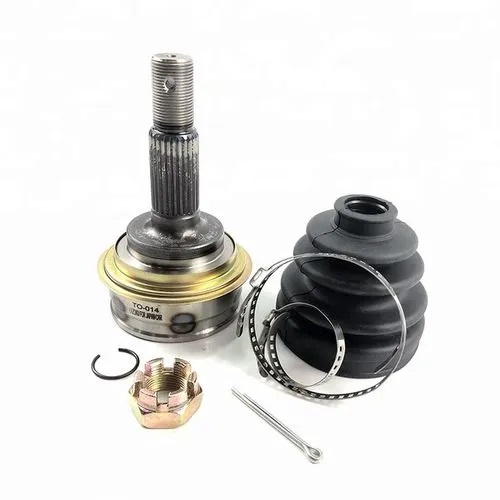
For instance, the driveshaft may travel unevenly or become unbalanced if a CV joint has too much play or is totally worn out. The performance of other parts, like the suspension, wheel bearings, and brake system, may be impacted by this imbalance. This can then result in vibrations that you can experience when braking.
It's more probable that other parts, such as warped brake rotors, worn brake pads, defective wheel bearings, or suspension problems, are at blame if you feel vibrations when you brake. It is advised to have a skilled mechanic examine your car in order to correctly identify and deal with the vibration's cause.
15. Steering wheel locked up and car won't accelerate, what should I do?
If your automobile won't move forwards and your steering wheel is stuck, there can be a major issue that has to be fixed right away. Following are some actions you can take:
- Remain composed: In order to make the best judgements in this circumstance, it is crucial to remain composed and focused.
2. Make that the steering wheel is not blocked by anything, such as a key that is in the wrong position or an engine that has been switched off. Ensure that the key is fully turned and the automobile is in the "on" position.
3. Restart the vehicle: Try totally shutting off the engine before doing so. Resetting the car's systems could resolve the problem.
4. Ensure that the power steering fluid level is not low by checking the power steering fluid. The steering wheel might lock up due to low fluid levels. For guidelines on how to check the power steering fluid and top it off if required, consult your car's handbook.
5. Look for mechanical problems: If the automobile won't accelerate and the steering wheel stays locked, there may be a mechanical fault with the steering or acceleration components. In this situation, it is advised to contact roadside assistance or a qualified mechanic to identify and resolve the issue.
Remember, it's preferable to call a professional for help or have the automobile towed to a repair shop if you are unable to properly operate your vehicle.
16. How to tell if rack and pinion bushings are bad
When assessing the condition of rack and pinion bushings, there are several signs you can look out for to determine if they are bad or worn out. Here are some common indicators:
- Excessive play in the steering wheel: If you notice excessive play or looseness in the steering wheel, it could be a sign of worn-out rack and pinion bushings. The bushings help maintain stability and reduce vibration, so when they deteriorate, you may feel increased steering wheel play.
- Unusual noises: Listen for any unusual noises while turning the steering wheel, such as clunking, knocking, or creaking sounds. Worn bushings can cause metal-to-metal contact, leading to these noises.
- Vibrations in the steering wheel: Faulty bushings can result in vibrations felt in the steering wheel, especially when you're driving on uneven surfaces or turning corners. This can indicate that the bushings are no longer effectively dampening vibrations.
- Uneven tire wear: If the rack and pinion bushings are deteriorating, it can affect the alignment of the front wheels. This misalignment can cause uneven tire wear, where certain parts of the tire tread wear out more quickly than others. Keep an eye on your tire condition and look for uneven patterns.
- Fluid leaks: Check for any signs of power steering fluid leaks around the rack and pinion assembly. Worn bushings can create excessive movement and stress on the seals, leading to fluid leaks. Look for fluid puddles or stains underneath the vehicle.
- Difficulty in steering: When the rack and pinion bushings are in poor condition, you may experience increased resistance or difficulty when turning the steering wheel. The steering may feel stiff or require more effort to turn.
If you observe one or more of these signs, it is advisable to have a professional mechanic inspect your rack and pinion system to accurately diagnose the issue and determine if the bushings need replacement.
17. What is hydraulic power steering pump?
One of the parts of a car's power steering system that aids the driver in spinning the wheels is a hydraulic power steering pump. The car is simpler to manoeuvre, especially at slower speeds or when parking, thanks to the power steering system's hydraulic pressure assistance.
Usually, the engine of the car uses a belt and pulley arrangement to drive the pump. It is made to pump power steering fluid, which is often a specialised hydraulic fluid, through the power steering system in order to provide hydraulic pressure. The fluid is pressurised and sent to the rack or gear that powers the power steering, where it exerts force to help the steering mechanism.
When the driver turns the steering wheel, a valve in the power steering system senses the input and directs the pressurized fluid to the appropriate side of the steering gear or rack. This causes the wheels to turn in the desired direction with reduced effort from the driver. The power steering pump continues to supply pressurized fluid as long as the engine is running and the steering wheel is being turned.
It's important to maintain proper fluid levels and ensure the power steering pump is functioning correctly to ensure optimal steering performance.
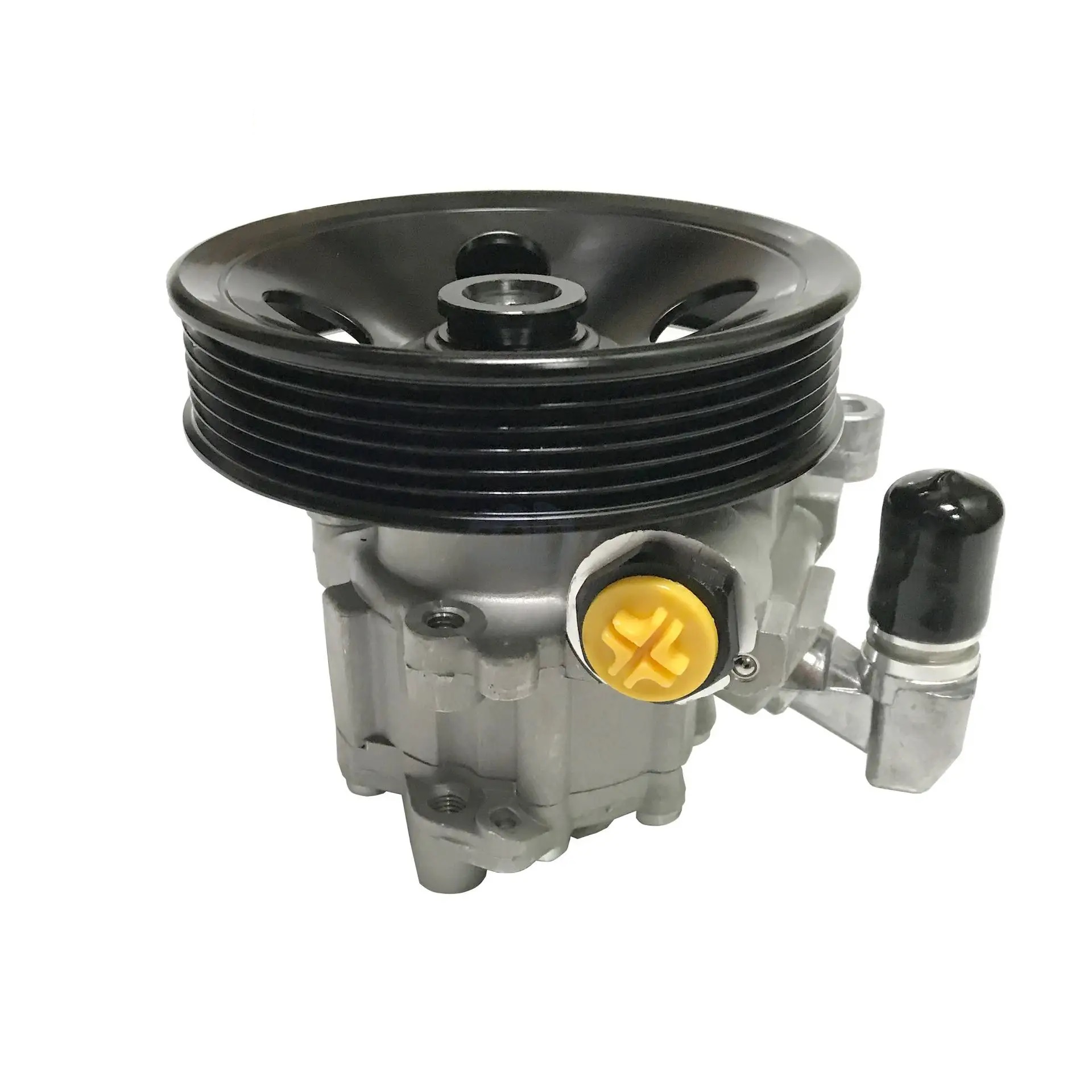
17. What does a bad flex pipe sound like?
A bad flex pipe in a vehicle's exhaust system can produce several noticeable sounds. Here are some common indicators of a faulty flex pipe:
- Hissing or Whistling Noise: A damaged flex pipe may result in a hissing or whistling sound, particularly when the engine is running or when you accelerate.
- Loud Exhaust Noise: If the flex pipe develops a significant leak or crack, it can cause an increase in the overall volume of the exhaust system. This may result in a louder exhaust noise, often described as a rumbling or roaring sound.
- Rattling or Clanking Noise: In some cases, a broken flex pipe can cause metal-on-metal contact, leading to a rattling or clanking noise. This sound is typically more noticeable during acceleration or when the engine is idling.
- Sputtering or Popping Sounds: A damaged flex pipe can cause irregular airflow, resulting in sputtering or popping sounds from the exhaust system. This is often more noticeable during acceleration or deceleration.
It's important to remember that these symptoms may also point to other exhaust system problems. Therefore, it is advised to have a competent mechanic analyse your car in order to properly identify the issue if you believe your flex pipe may be malfunctioning based on the sounds you have heard.
18. What happens if rack and pinion goes out while driving?
If the rack and pinion system goes out while driving, it can lead to significant problems and potentially dangerous situations. The rack and pinion system is a critical component of a vehicle's steering mechanism, responsible for converting the rotational motion of the steering wheel into linear motion that turns the wheels.
Here's what could happen if the rack and pinion system fails while driving:
- Loss of Steering Control: The most immediate and severe consequence of a rack and pinion failure is a loss of steering control. Without the ability to turn the wheels, the driver will have difficulty maintaining the intended direction, making it challenging to navigate the road safely.
- Difficulty Turning: Before complete failure, you might experience increased resistance when turning the steering wheel, making it hard to steer smoothly and accurately.
- Noisy Steering: A failing rack and pinion system can produce strange noises, such as clunking, grinding, or knocking sounds when turning the wheel.
- Fluid Leaks: Rack and pinion systems are usually power-assisted, using hydraulic fluid to aid steering. A failure could be caused by a leak in the power steering fluid, resulting in a loss of hydraulic pressure, making steering even more challenging.
- Increased Risk of Accidents: Loss of control over the steering can lead to accidents, especially at higher speeds or in critical situations where quick and precise steering is essential to avoid collisions.
If you experience any symptoms of rack and pinion failure while driving, it's crucial to pull over and have the vehicle towed to a qualified mechanic for inspection and repair. Attempting to drive with a malfunctioning steering system can be extremely dangerous and is not recommended.
Regular vehicle maintenance, including checking the power steering fluid levels and addressing any unusual noises or steering difficulties promptly, can help prevent severe rack and pinion failures and keep you safe on the road.
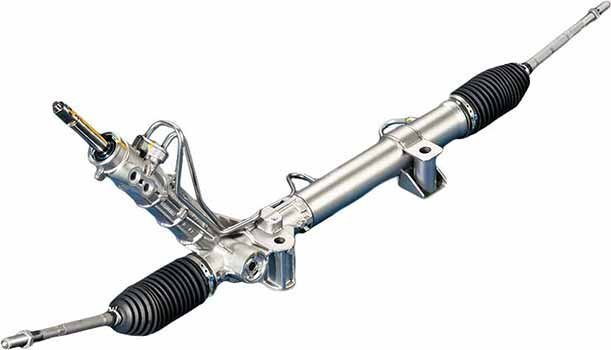


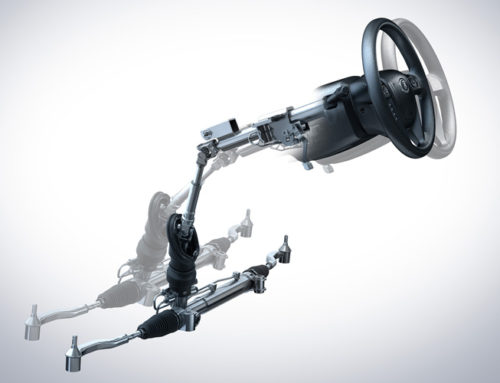
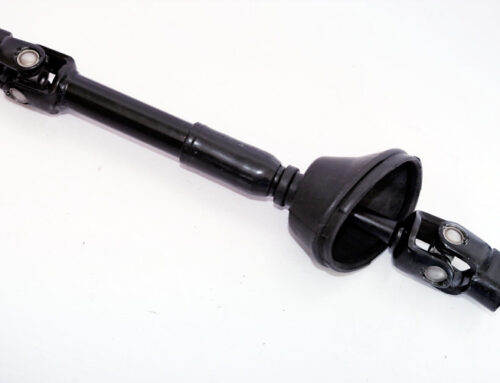
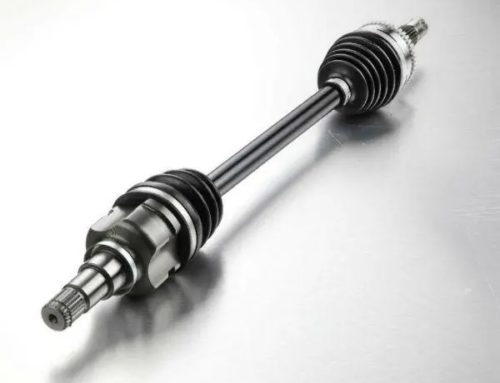
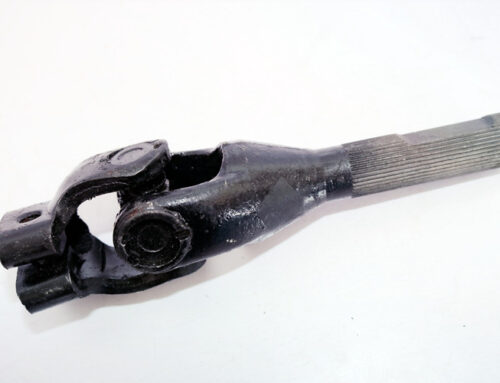

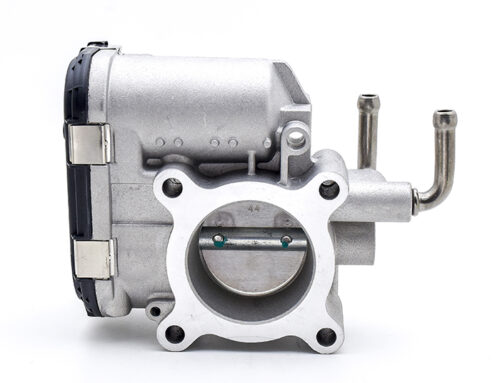
Thankyou for helping out, fantastic information.
Pretty! This was a really wonderful post. Thank you for your provided information.
great submit, very informative. I ponder why the other specialists of this sector do not realize this. You should proceed your writing. I’m confident, you have a huge readers’ base already!
Good day! This is my first visit to your blog! We are a team of volunteers and starting a
new project in a community in the same niche.
Your blog provided us valuable information to work on.
You have done a marvellous job!
Thank you for sharing your info. I really appreciate your efforts and I am waiting for your next write ups thanks
once again.
Hi, i think that i saw you visited my web site so i came to “return the favor”.I’m trying to
find things to improve my web site!I suppose
its ok to use some of your ideas!!